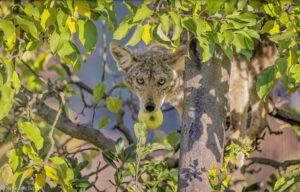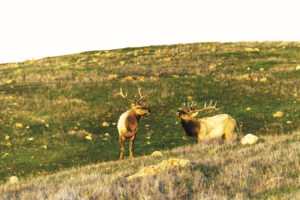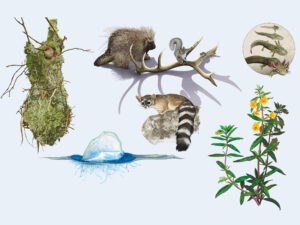October is the final month of tule elk rutting season, when the males fight it out for dominance and the right to mate with the females of the herd. Our local elk are the smallest subspecies of the “wapiti,” or North American elk, with the bulls weighing in at 430 to 550 pounds. Bugling calls, staring contests, and clashing antlers are all part of the game. Antlers of the mature bulls can have six or seven tines on each side and a main beam up to five feet long. They’re shed every year after rutting season and often recycled as food for rodents, who relish them for their calcium. Tule elk were all but extinct in the Bay Area by the late 19th century, but after a major conservation effort, ten were reintroduced to Point Reyes National Seashore in 1978. Today, the largest herd (about 450) lives in a reserve out on Tomales Point, and a smaller herd (about 25) roams in the Limantour wilderness area. Further east, a small herd can also be found near Suisun Bay in the Grizzly Island Wildlife Area. Tule elk are the most active during the early morning and dusk. For more information, contact Point Reyes National Seashore at (415) 464-5100 or log on to www.nps.gov/pore.
For those fed up with congested roadways, a fast-moving ferry’s comfortable ride, fresh air, and saltwater spray make it appear to be a wonderful commute alternative. However, according to Teri Shore of Bluewater Network, several new fast diesel ferries and ferry terminals being proposed by the San Francisco Bay Area Water Transit Authority (WTA) could actually increase air and water pollution and threaten Bay wetlands and wildlife. High-speed ferries can flood bird nesting areas, disturb rafting birds and resting seals, stir up bottom sediments, and throw wakes that erode shorelines. Expanded routes could also entail channel dredging and terminal construction near sensitive wetlands. And, unfortunately, fast diesel ferries also pollute more per passenger mile than diesel buses and cars. Given these negative impacts, Bluewater Network has begun exploring alternatives, such as solar-powered or other low-polluting ferries, requiring slower speeds, and developing wildlife-sensitive routing and terminal siting. If you are interested in lobbying for environmentally friendly ferries, contact Bluewater Network at (415) 788-3666, ext. 159; or log on to www.bluewaternetwork.org. For more information on upcoming hearings, you can also contact the WTA at www.watertransit.org.

.jpg)



